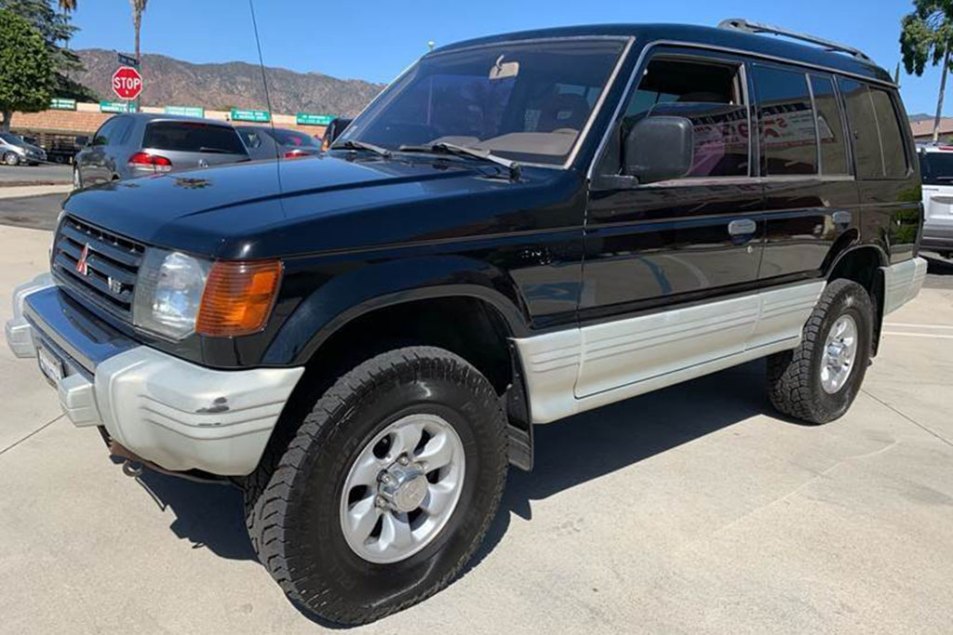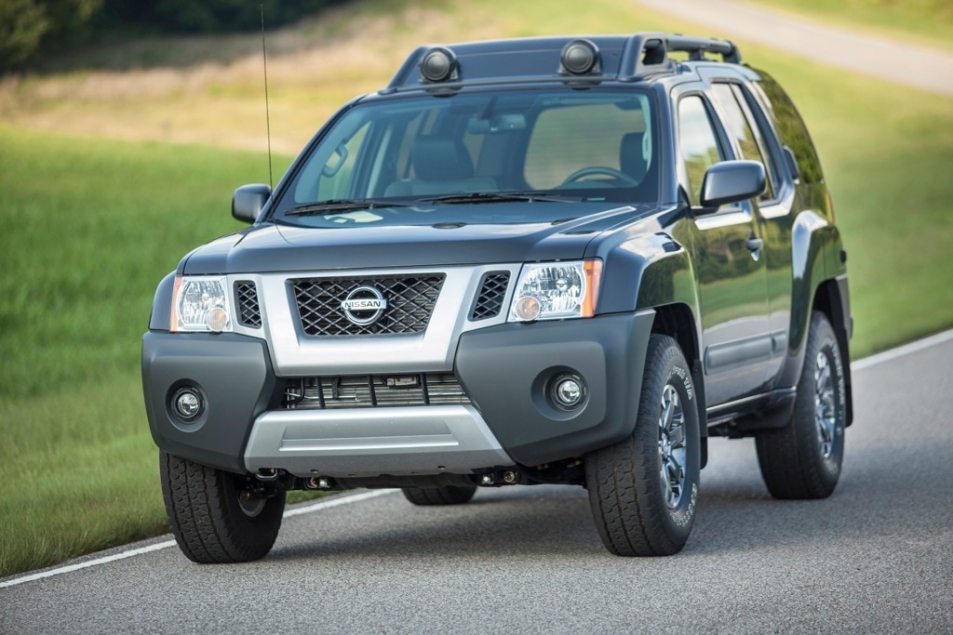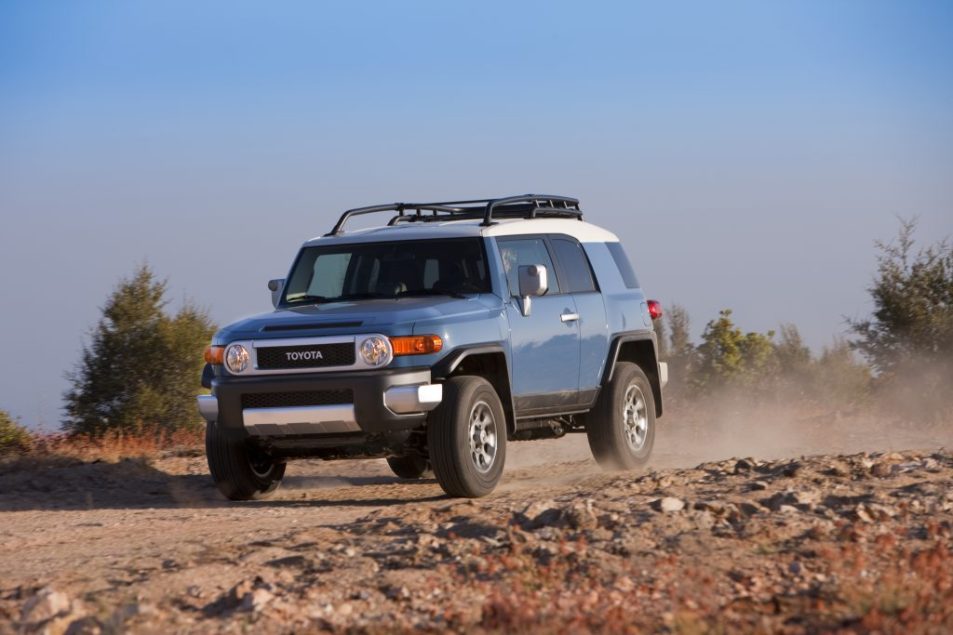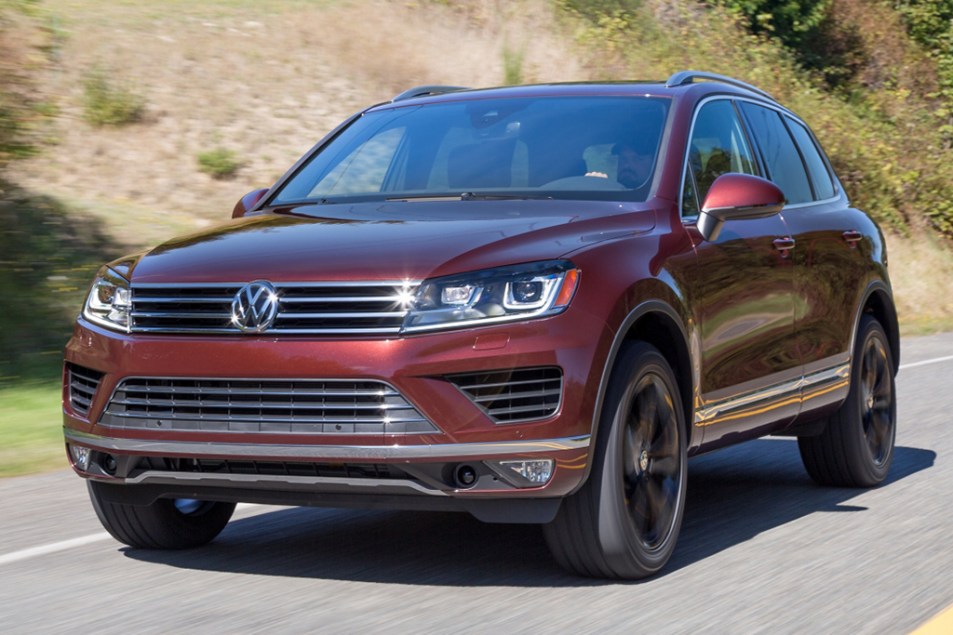Several compelling SUVs were built for a few years and then dropped by their manufacturers. With the SUV boom in full force, we think it’s high time for a few of these nameplates to make a revival.
Here’s a look at five SUVs that have been discontinued but really should be brought back into showrooms.
1. GMC Typhoon
General Motors in the late 1980s and early 1990s must have been an entertaining place. Sure, there were plenty of indistinguishable Oldsmobuicks, but those Detroit engineers also saw fit to turbocharge a V6 and then put it in a pickup (the GMC Syclone). A year later, a version based on the GMC Jimmy SUV arrived under the Typhoon name. This was arguably the original performance SUV, though fewer than 5,000 were built over a 2-year run from 1992 to 1993.
The turbocharged V6 cranked out a then-impressive 280 horsepower, 90 more than the standard model, and power went to all four corners through a full-time transfer case. The lowered suspension also gave the Typhoon impressive handling for a high-riding SUV.
GMC is definitely one of GM’s stars, so it’s somewhat of a surprise that the automaker has never offered a proper street performance-oriented model since. Sure, Typhoon-inspired vehicles have been built by aftermarket firms, but none have had the polish of a proper factory-backed model. A modern Typhoon based on the Terrain with upward of 350 horsepower would be awfully cool, right? Find a GMC Jimmy for sale
2. Mitsubishi Montero
Mitsubishi was a cool brand in the 1980s and 1990s with a lineup of forward-thinking vehicles capped by the chunky Montero. Its boxy lines gained toned angles as it entered the 21st century, and then suddenly after 2006 it was pulled from the market. Mitsubishi cited low sales, which undoubtedly were brought on by a hefty price tag. The Montero was built in Japan and was subject to substantial import tariffs. In its final year, it was priced at around $36,000, money that bought a similarly-equipped Toyota 4Runner with V8 power.
Mitsubishi replaced it with the utterly underwhelming Endeavor, a less-costly SUV with frumpy styling and a weird interior.
Overseas, though, the Montero (typically named Pajero, depending on the market) soldiered on until March 2021 when the last few were built. With demand for higher-end SUVs taking off, a return of the Montero could be a big moneymaker for Mitsubishi. Find a Mitsubishi Montero for sale
3. Nissan Xterra
Can a vehicle that was behind the times in so many ways also have been ahead of the game? If any vehicle fits that description, it’s the Nissan Xterra. It landed for the 2000 model year as an SUV version of the Nissan Frontier with rugged styling and proper off-road chops.
The Xterra initially squared off against the Jeep Cherokee, which was replaced by the lame Liberty in 2002. After that, the inexpensive Xterra was pretty much on its own. Sales were brisk to start, and the second-generation version that arrived for 2005 dialed up a lot more refinement.
The 2005 Xterra was the beginning of the end, though. An update for 2011 brought few notable changes, and by 2015 it was axed from the lineup as buyers shifted toward car-like crossovers such as Nissan’s own Rogue.
Today, though, interest in rugged SUVs is on the way up. Ford’s Bronco Sport, the Toyota 4Runner, and a slew of Trailhawk-badged Jeeps offer real capability. Even Nissan realizes this as its new 2022 Pathfinder is positioned as a tougher offering than before, but any rumors of an Xterra revival are unfortunately just that. Find a Nissan Xterra for sale.
4. Toyota FJ Cruiser
Toyota has a very long heritage of building off-road-capable SUVs that dates back to the 1950s when the original Land Cruiser came about. Admittedly, its earliest predecessor was based on an American Jeep captured by Japan’s army during World War II, but the U.S. government later enlisted Toyota to build rugged military vehicles. Those original Land Cruisers earned a deserved reputation for reliability, and for the 2007 model year Toyota honored its classic model with the 4Runner-based FJ Cruiser.
This retro-style truck was a properly capable off-roader with tons of personality, something not often seen in an SUV. Toyota even developed special limited-edition versions for the American market with exclusive paint colors.
Sales were hit hard by the 2008 financial crisis, and by 2014 Toyota no longer saw a business case for the FJ Cruiser in the U.S. Amazingly, though, the FJ Cruiser is still built in Japan for export to some markets. In the Philippines, a new one costs $44,000. Adjusted for inflation, and considering that price includes local excise taxes, a new FJ Cruiser over there isn’t that much more expensive than it would cost here. Find a Toyota FJ Cruiser for sale
5. Volkswagen Touareg
Not many of us saw the Volkswagen Touareg coming when it arrived for 2004. It was expensive, complex, sophisticated, and powerful — four adjectives never consistently applied to any VW other than the Phaeton. The Touareg shared its underpinnings with the Porsche Cayenne, so it was terrific to drive, and its optional turbodiesel V10 put out a staggering 553 lb-ft of torque.
It wasn’t a total flop, but it also wasn’t what Volkswagen was used to selling in the U.S. The automaker’s dealers were more accustomed to $17,000 Jettas and $23,000 Passats, so a $40,000-plus SUV was a head-scratcher. The Touareg’s complexity also meant it was plagued with issues, which made it a very expensive vehicle to maintain. The Touareg lives on in Europe, though. The latest model is a distant cousin to the Lamborghini Urus, something the VW Atlas sold here cannot say about its family tree.
Today, VW has four SUVs in its lineup. While they’re good vehicles with well-thought-out interiors and reasonable price tags, none feel special in the way the Touareg did. Maybe VW doesn’t need a megabuck SUV, but we still miss this one. Find a Volkswagen Touareg for sale















